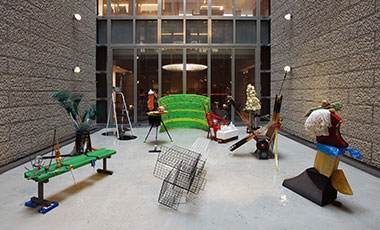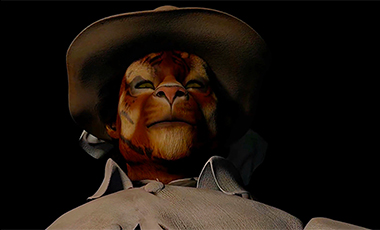In the NovemberArt Talk, we review the 《Deoksugung Project》 (2012.9.19.~12.2, Deoksugung Palace), which has brought a nation-wide sensation through the encounter between Deoksugung and Korean contemporary art. At every place in Deoksugung which has various time layers as a historical site, this art project exhibits various works of Korean contemporary art by diverse creators from diverse fields such as artists, dancers, and so on. As far as the Art Talk is a comer that proposes diverse points of view through cross-criticisms by diverse experts from various fields, we reviewed this project and art works this time with peculiar aspects of diverse critics of various fields, including the curator of the project.
《Deoksugung Project》: I want to go further back in time
Why did I expect to watch the exhibition while wandering about the tranquil spaces which would be soaked right up with old times. What a trite preconception I had on the old palaces. In addition, it is Deoksugung Palace. All those cumulative times are to be the last violent hurricanes of 500 years of its kingdom which was burning up by imperialism with wars and restoration. And its vortex still seems unfinished. Across of the square, there is a buzzing noise of unknown event for the people to be heard and right next to the walls, here is a bunch of people who continues a hunger strike with their last breath as if they are superhuman in a long lined tents. Walking through the road between them, I entered Daehanmun. Then alas, it is a fine Sunday afternoon in autumn. The inside of the walls was packed with crowds (Yes, like flowing waves!) with its autumn foliage which is beautifully tinged with much more fascinating colors than spring flower.
Anxiety and agitation placed on the back of calmness
9 exhibitions unfolded in each edifice of the palace. With knowing a number from 1 to 9 is not a ‘fixed order’, I first headed to Hamnyeongjeon, numbered as ‘1’. (the way to Hamnyeongjeon was a short cut to get away from the crowds as well) This one room at the building was used for a bed room for Emperor Gojong. There are the cream colored walls, white cloth with braids covered windows and the neatly laid three Boryo (a traditional fancy bedding mattress). As having a look into the room from the floor, the remaining warm midday autumn sunshine on the back made me feel the room even colder. The room seems rather lonely without any furniture but the mattress and the duvet themselves.
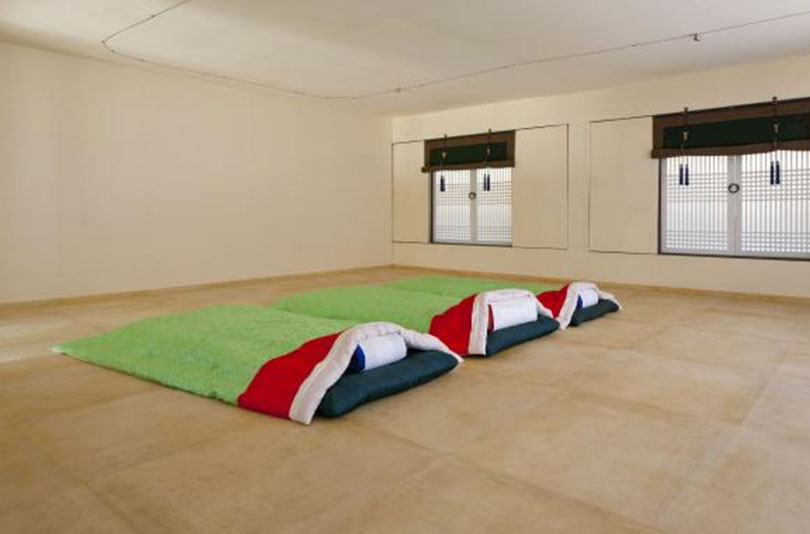 Do Ho Suh_ Hamnyeongjeon, Hamnyeongjeon project-East Ondol Room_National Museum of Contemporary Art Korea Commission, 2012
Do Ho Suh_ Hamnyeongjeon, Hamnyeongjeon project-East Ondol Room_National Museum of Contemporary Art Korea Commission, 2012
The performance of Jung Youngdoo of which is screened at inside of the floor reveals its loneliness more evidently. Jung Youngdoo from a performance who took a place in the room right next to the exhibition repeats the performing on the three Boryo in the room in slow motion with white pants, jacket and socks on. And another performance in between has been inserted, showing little by little. Jung Youngdoo performs in the naked torso and a pair of white short pants repeats the same movement between the three Boryo back and forth. Not like the inattentively overlooking performance which was fixed in the room, the short insertion scenes, even though it is the same performance over and over, strongly give off the multiple feelings because of its zoomed screen. But the background at a glimpse seems totally white, the different place from the inside of the room in Hamnyeongjeon. The insertion of the scenes at the unknown place during the static performance of Hamnyeongjeon discloses its static atmosphere on the back of anxiety and agitation. Now is in the sunny autumn midday at the old palace, though. Because the sky and the sun were so blue and so bright to appreciate trembling, the crowds that betrayed my expectations as I enter Daehanmun had pushed in here with that excitement. The children running around the floor of Hamnyeongjeon, a child or parents in front of the screen asking themselves if what the heck it is, the conversations with the embarrassment laid open. Everything interrupted me from appreciation. So I was a little annoyed. But there was a realization of which I could be the interruption for the crowds I was annoyed with while I was following the leaflets for the next exhibition.
Distortion, conflict, wandering
Deokhongjeon by Ha Jihoon attracts the attention due to the chairs of elegant line with the glare of the chromium plating on the floor. There were seated visitors in a variety of postures on the chairs. The palace viewing is usually all about a huge architectural appearance, gardens and peeking furtively on terrace stones but it attracts visitors at interior, which arouses my curiosity. The eyes catch even the corners while sitting in various postures. The colorful patterns on the ceiling, internal decoration, embossed gleaming towered golden chairs and the reflections of the patterns on the chair. It served an enough variety of impetus even if the work description was not seriously referenced.
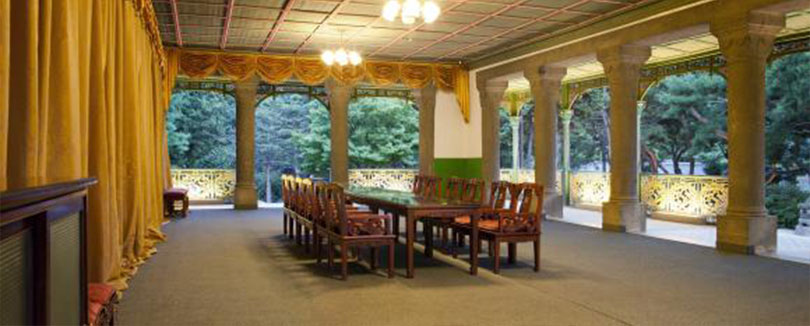 Chung Seoyoung_Jeonggwanheon, Inwardly, Determine Yourself_National Museum of Contemporary Art Korea Commission, 2012
Chung Seoyoung_Jeonggwanheon, Inwardly, Determine Yourself_National Museum of Contemporary Art Korea Commission, 2012
Perhaps, as one of the audiences at this exhibition, the most fulfilling piece for the intent of the artist was probably Jeonggwanheon by Chung Seoyoung. As Jeonggwanheon being a western style building besides Seokjojeon, has no walls just like a veranda of western buildings. While heading towards Jeonggwanheon, looking at an installation of sticking-out glass in between the tables, I wondered what the weird looking piece was. There was no splendor like from Seokjojeon but a resemblance of unfamiliarity at Jeonggwanheon which also has no architectural deliberations from old times like any other palaces own. It continued as passing by the glass at Jeonggwanheon. However, what a landscape I was facing in front of the glass as turning my body! Not able to understand at a glance because of the symmetry of the structure of the building, however, a space turning into a distorted image was unfolded in my eyes without knowing why and how. Slightly misaligned pillars drawing an invisible line, abruptly changing light, and the outer landscape. Unfamiliar piece was a mirror, not a glass. The overlapped but dislocated images reminded me the multiple layered times within its space.
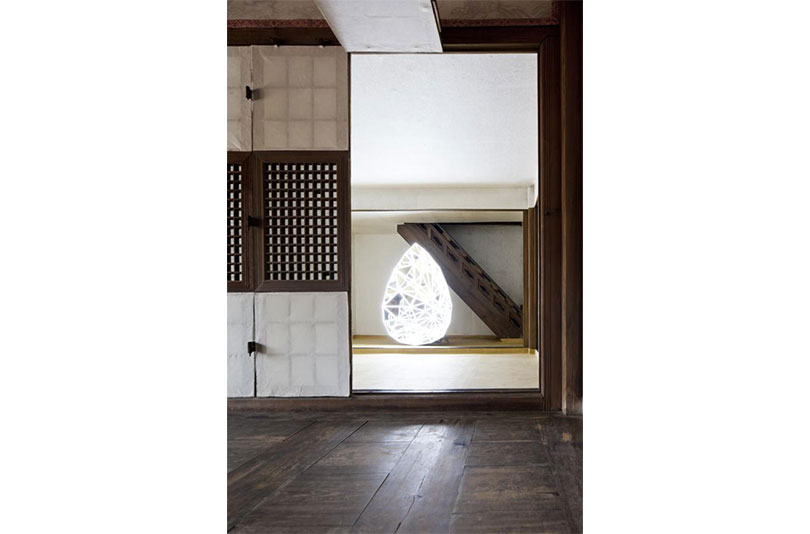 Yeesookyung_Seogeodang, Tear Drop_National Museum of Contemporary Art Korea Commission, 2012
Yeesookyung_Seogeodang, Tear Drop_National Museum of Contemporary Art Korea Commission, 2012
If Seogeodang by Kim Young Seok permeated the space by representing the time of Princess Deokhye, Seogeodang by Yeesookyung prominently asserts itself at a reflection of blue LED light on a mirror piece. And Junghwajeon Haenggak by Sung Kiwan(SSAP). The clear sound of reading the novel of Chosun Dynasty flows around the main edge in a small space. The magnificent Junghwajeon over pillars and a recorded voice of announcer reading clearly of a secret midnight affair. An odd collision of the visual and the auditory. Hamnyeongjeon again. Hamnyeongjeon by Do Ho Suh seems that it is indifferent to leave out a trace if you are not interested in putting your eyes onto the unnaturalness of three straightened Boryo. If the indifference causes quite a sensation, the video installation is probably the reason. But what was missing would be its suitable location of the middle of the floor and the right next door under consideration. It was not enough to make its story by its presence but there were the contents of the video alone. What trouble my mind from the embarrassing conversation was that there was a thought of pressure to appreciate without making any sense in such an exhibition to be met ‘work’ unexpectedly unlike gallery space. Then it needs to assert its presence with a little more kindness and a little more distinction. It should convey the story of installation of its presence being, not only the contents of film.
Revolve around the dimness
The exhibited works of Deoksugung Project create and represent a variety of stories in many ways of studying the palace than any other commentary or information. Although I wrote about the frustration in my mind, it was literally a bit of frustration. But there was a question as walking out of Daehanmun after going through all. The question of why all the exhibitions hover around the time of Emperor Gojong. Deoksugung contains much longer time to ascend to Kyeongwongung even though the most of the building was restored or added in the period of Emperor Gojong. Beause of this, in spite of that each palaces has a variety of interpretations and methodologies, the afterimages from each exhibition leaves similar dimness. Or it could be the reason of that our memories of the history and our imaginations are in the limit of just a hundred years ago. After the exhibition, I had a desire of going farther back in time. Now I wonder if such sorriness would remain as the lingered emotion from this exhibition.
Deoksugung Project viewed by 6 people
《Deoksugung Project》: Contemporary Interpretation on Legacy _ Kim Inhye(Curator, National Museum of Contemporary Art Korea )
《Deoksugung Project》: To get over the Sadness to Pieces _ Sun Seunghye(Professor, Sungkyunkwan University)
《Deoksugung Project》: Reconciliation between Crash of Time and Scenography _ Kim Namsoo(Choreography Critic)
The Calling of Memory _ Jung Hyun(Art Critic, Independent Curator)
The inside of time in the eternal rest _ Gu Na-yeon(Art Critic)

Kim, So-yeon / Theater critic
Theater critic. Served as the editor-in-chief of Culture News and Weekly@Arts Management.
Appreciating the stage performance, talking, writing, and making magazine with interest how to communicate between the stage and the world.
